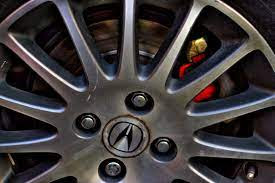Lug nuts are an essential component of any vehicle's wheel assembly. They secure the wheels to the hub, keeping them in place while the car is in motion. However, lug nuts can become eroded over time, making it difficult to remove them when necessary. This is where anti-seize comes in.
What is Anti Seize?
Anti-seize is a lubricant that prevents two metal surfaces from seizing or sticking together. It is made from a mixture of metal powder, such as copper or nickel, and carrier oil, such as grease or oil. The metal powder fills gaps between the two surfaces, while the carrier oil provides lubrication and prevents corrosion.
How To Use An Anti Seize
Using anti-seize on lug nuts is a relatively simple process that anyone can do, regardless of their mechanical experience. Here are the steps to follow:
Gather Your Materials:
Before you begin, you'll need to gather a few materials. These include a small anti-seize, a clean rag or paper towel, and a socket wrench.
Clean the Lug Nuts:
Before applying anti-seize, it's essential to ensure that the lug nuts are clean and free of debris or corrosion. Use a clean rag or paper towel to wipe off any dirt or grime from the threads of the lug nut. a mess on your wheels and tires.
Screw on the Lug Nut:
Using a socket wrench, screw the lug nut onto the wheel hub. Be sure to use the appropriate torque to tighten the lug nut, as over-tightening can cause the stud or lug nut to break.
Repeat for All Lug Nuts:
Repeat this process for all of the lug nuts on your vehicle.
Wipe off Any Excess:
After applying anti-seize to all lug nuts, use a clean rag or paper towel to wipe off any excess. This will help prevent the anti-seize from flinging off while driving and creating.
Pros of Using Anti-Seize on Lug Nuts:
Prevents Corrosion:
One of the primary benefits of using anti-seize on lug nuts is that it prevents corrosion. Lug nuts are often exposed to harsh weather conditions, road salt, and other corrosive materials that can cause them to corrode over time. Anti-seize creates a barrier between the lug nut and the elements, preventing corrosion and prolonging the life of the lug nut.
Prevents Seizing:
Another benefit of using anti-seize on lug nuts is preventing them from seizing. When lug nuts are exposed to high temperatures, they can become fused to the wheel hub, making them difficult to remove. Anti-seize prevents this by creating a layer of lubrication between the lug nut and the wheel hub, allowing it to be easily removed when necessary. https://www.cardealerreviews.org/2023/03/cars-in-some-ways-picked-up-lot-of.html
Easy to Apply:
Anti-seize is easy to apply and can be done by anyone, regardless of their mechanical experience. Simply apply a small amount of anti-seize to the threads of the lug nut before screwing it onto the wheel hub. It's that easy!
Cons of Using Anti-Seize on Lug Nuts:
Over-tightening:
One of the biggest concerns with using anti-seize on lug nuts is that it can cause them to become over-tightened. The lubrication provided by the anti-seize can make it difficult to gauge the appropriate amount of torque required to tighten the lug nut. This can result in the lug nut being tightened too much, leading to the stud or lug nut breaking.
Messy Application:
Applying anti-seize can be messy, especially if you're not careful. The metal powder in the lubricant can easily get on your clothes or hands, leaving behind a greasy residue. Additionally, if too much anti-seize is applied, it can fling off the lug nut while driving, creating a mess on your wheels and tires.
Mixed Opinions:
There is no clear consensus on whether or not anti-seize should be used on lug nuts. Some mechanics and car enthusiasts swear by it, claiming it makes removing lug nuts easier in the future. Others argue it can cause more harm than good and should be avoided altogether.
Conclusion:
In conclusion, using anti-seize on lug nuts has its pros and cons. While it can prevent corrosion and seize, it can also cause the lug nuts to become over-tightened and create a messy application. Ultimately, the decision to use anti-seize on lug nuts should be based on personal preference and your vehicle's specific needs. Using anti-seize may be beneficial if you live in an area with harsh weather conditions or frequently drive on salted roads. However, if you are unsure, it's always best to consult a trusted mechanic or automotive expert.

Comments
Post a Comment